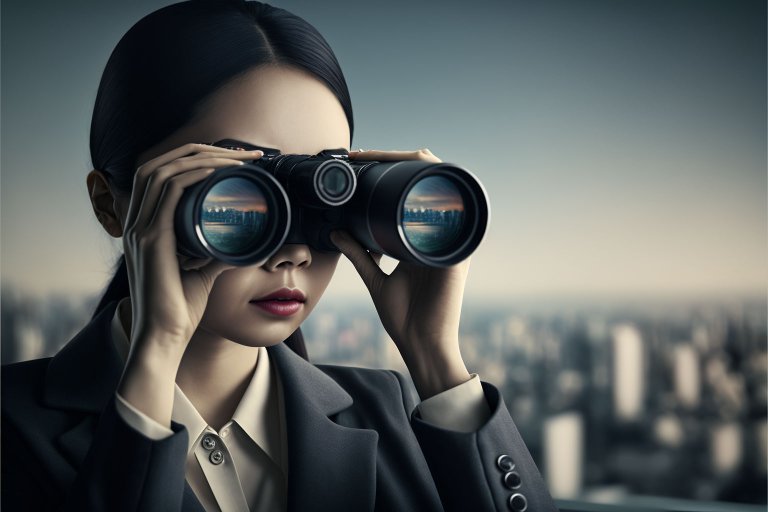What Solution Architects Should Consider When Choosing a New Content Platform

featureArticle.chapters
featureArticle.introduction
Selecting a new content platform for your client or organization can be a tricky process. As a solution architect, there are several considerations you and the business and procurement teams must take into account when making this gargantuan decision.
Is the content platform agile? Can it be customized to different needs and use cases? Does it meet the editorial, workflow and usability requirements of the content team? Does it fit into your current technological architecture, skill sets, and legacy systems?

Cost and procurement should also be a priority. Is the solution within budget and can you easily source it? Equally as important is whether the new platform complies with any existing regulations. Failing to adhere to law could prove costly down the line.
Having a resource guide at hand is useful in avoiding any potential issues and to ensure a best possible process for you and your team. Content platforms are an integral part of any software architecture and thus will play an important role in its success. Selecting the right one is therefore paramount.
Enonic has over 20 years of experience in the content management industry. After countless meetings, talks, and interviews with advisors, solution architects, and similar key personnel of any larger digital undertaking, we have gathered their collective wisdom in this guide. Enjoy!
Chapter 1
How to use this guide
This guide is designed to assist you at each stage in the process of choosing a new digital platform. Whether you are just starting out or are on the verge of deciding a vendor, this guide can help with pertinent questions and reminders.
We have divided the guide into three main parts that reflect the procurement process:
- Awareness
- Consideration
- Decision
If you don’t know which stage you are currently in, just start reading the questions in one of the parts. You are bound to identify whether you have already been at this point, if it’s above your head, or if it’s just the perfect spot.

Chapter 2
Becoming Aware
What Are You Trying to Accomplish When Becoming Aware?
In this stage of becoming aware of the challenges of your organization and the potential alternatives, you might recognize the following goals:
- To be able to communicate more efficiently with specific target audiences both internally and externally
- To cut costs on technology, including the hours spent on using it
- To get a more modern platform that is faster for developers and easier to use for content editors
These goals often come from a renewal of the company’s digital strategy. To support specific business goals, you may need to change your tech stack to support the buyer’s journey better, move to a headless architecture, adapt a long-term structured content strategy, and more.
What Is Your Primary Awareness Pain Point?
Your current CMS may be expensive, outdated and unsupportive of your digital strategy. Other common issues include:
- Can’t be upgraded
- No support for new design system
- Not user friendly
- Slow development
- Doesn’t integrate well with your front-end frameworks
The bottom line is that you need to find a future proof platform that you can trust will support the digital strategy of your organization for years.

What Are You Doing to Address These Awareness Challenges?
You might already be pressured by stakeholders about changing the digital platform because it’s cumbersome to work with. Therefore, keep it cool and have a clear course on what you are going to do now.
Here are some suggestions to actions you can perform to increase your awareness of your organization’s central challenges and move further along the funnel:
Have a talk with the agency or management consultants that are creating the new digital strategy of your organization or client.
Search on the Internet, read up on the topics, ask ChatGPT, check vendors, and talk to your network (even by asking on LinkedIn!) to find out how they have solved similar challenges.
Have a meeting with your development team and other business stakeholders, including marketing and your content team, about their issues and visions forward.
What Are You Feeling or Thinking at This Awareness Stage?
It’s OK if you feel overwhelmed. You need to figure out how you can move forward and zoom in on different possible solutions.
There is a lot of information to cope with and a lot of possible vendors to look into. And you need to find that future proof platform!
How Can Vendors Best Help You Move Forward from Awareness to Consideration?
In the awareness stage, you will compile a longlist of potential vendors suitable for delivering the new content platform for your client or organization.
Make sure they know you have certain expectations in how to be guided further along the funnel. The vendors should:
- Support you in figuring out how to connect digital strategy and platform choice
- Show you how much money you can save by moving to them
Awareness Questions to Consider
Here are some more questions in the awareness stage you can use to further build up your business case:
- How do I find the right platform to support our new digital strategy / our new services?
- How far can I get with what we already have?
- How do I upgrade my existing system?
- How do I find a way to bring together all my systems?
- How do I find a platform that can save time and money for us?
- How do I find a new solution that is future proof?
- How do I find a platform that allows me to communicate more efficiently with my audience?
- How do I ensure that the needs of the content team are catered to?
- How do I find out how flexible a given vendor is in terms of structured content?

Chapter 3
Considering Alternatives
What Are You Trying to Accomplish While Considering a Platform?
When you have begun to consider alternatives, the following goals may now be on the top of your mind:
- Finding a good process for choosing a platform to replace your existing or building something new
- Trying to find the difference between the solutions researched and see how they fulfill the needs you have in your entire organization
- Compiling an overview of a vendor longlist
- Choosing a platform for the next 10 years
What Are Your Primary Considerations?
There might be many issues to consider, but here are three common:
- Being able to understand the difference between the possible solutions
- Catering to all your internal stakeholders
- Finding time to do the necessary evaluation and testing
What Are You Doing to Address These Consideration Challenges?
Now that you are well underway in the process of choosing a new content platform, it is time to roll up your sleeves and do some meaningful and impactful work.
You should map out needs and requirements across the various departments and stakeholders across your organization to start the usually comprehensive RFP process.
Also, ask around in your network for references about the different vendors—people may have more information than you think!
When it is time to really do your homework, sit down and read software reports to research differences. Examples of such analyst reports include Gartner, Forrester, and IDC, as well as review services like G2 and SoftwareReviews.

It is no shame to receive assistance, so consider bringing in an external contractor to help with the evaluation. After all, they are experts in exactly such matters as lengthy and complex procurement processes of equally complex digital platforms.
And then an important step: create a dedicated project team and set up a realistic, albeit rudimental timeline for the project.
Then it is time to identify a longlist of vendors, possibly together with your contractor and team—based on your acquired knowledge and experience.
Finally, you should communicate with the potential vendors and do a preliminary Proof of Concept (PoC).
What Are You Feeling or Thinking at This Consideration Stage?
You are now most likely focused on making sure that the needs of all stakeholders are taken into consideration. Simultaneously you are still concerned with meeting the deadline for the project.
Take a breather and know that you are not alone in this situation. Make the fullest use of this guide which is comprised of the knowledge of your colleagues in similar situations.
How Do Vendors Best Help You Move Forward From Consideration to Decision?
The vendors should help you understand how they stand out from the competition, through PoC, personal demos, videos, and articles on their site.
The vendors should show:
- How they support your new digital strategy
- How moving to them will help you save cost and money—as tangible as possible, preferably with numbers
- How moving to them will be more cost-effective than continuing on the existing platform
- How using their platform can be used to bring together several systems
- How using their platform can reduce your technology footprint
- How easy it is to get both the developers and editors up and running on their platform
Also, make sure to conduct a proper PoC, as this is an invaluable tool in doing real-world work within the actual platform. Then you should highlight the need for looking at the developer experience—and not primarily editor—as development is the biggest cost.
The vendors should quickly respond to RFIs and any other questions you or your team might have. They also ought to provide content to support your evaluation—both on the evaluation process as such and on their product as a platform. This can for instance be in the form of relevant case studies.
Consideration Questions to Consider
- What vendors can help me?
- What do the review services and analysts recommend?
- How can developers learn this platform?
- What does the pricing model look like? Is it predictable?
- What is the TCO of platform X vs. platform Y?
- Can the solution run in our preferred cloud or is it a pure SaaS?
- Is it user-friendly for our content editors?
- How easy is it to get up and running with the platform for developers?
- How does this fit into our architecture (JavaScript, Java, .NET, headless)?
- Who is using this platform?
- Does the platform have all the features we require?
- Do they have a developer community?

Chapter 4
Deciding on the Right Platform
What Are You Trying to Accomplish in the Decision Stage?
In this third and final phase of choosing a new digital platform, the answer to what you are trying to accomplish is of course given: you are trying to decide on which digital platform to purchase.
But this is not all. You also want to:
- Be certain that the preferred solution actually solves the needs of your organization
- Get the full overview of the platform (both product and company) to make sure you understand how the platform will help you
- Understand the pricing and support model
What is Your Primary Decision Pain Point?
You are close to the finish line, but the hardest battle still remains. Here are several pain points experienced by other advisors and solution architects facing similar challenges:
- Being confident that you are making the right choice when it’s difficult to compare solutions
- Finding time for a proper PoC
- Collecting all the needed information to make a decision
- Getting the rest of the organization on board and explaining the value to them

What Are You Doing to Address These Decision Challenges?
It might be tempting to relax so close to the decision, but now you must do the toughest work yet.
Have meetings with internal stakeholders to make sure all needs are covered—especially development, the content team and marketing.
Have close dialogue with the vendors and ask questions, before testing the platform with a PoC or a demo.
Talk to the legal department of your organization about contractual matters and compliance.
What Are You Feeling or Thinking at This Decision Stage?
At this crucial stage, it is no wonder if you are somewhat anxious about taking a decision. It has to be the right one, as it has a lot of impact on both colleagues and on the business.
In these final days, don’t forget to focus on getting the full overview!
How Do Vendors Best Help You Move Forward From Decision to Buying?
If a platform is a top alternative, it is wise to arrange a meeting with the vendor to ensure you consider all important factors. You should also get help to obtain the full overview you need.
In this decision phase, the vendors should:
- Make it as easy as possible to get a proper PoC in place
- Provide references to build trust and proof
- Being hands-on in the process so you can feel they are invested in your success
- Being transparent about what happens when you sign the contract—making sure you can see the next steps
Decision Questions to Consider
- What is the price?
- What does the contract look like?
- Is the vendor certified? (e.g. ISO 27001)
- How can we get a real-life sense of working with the platform in the easiest way?
- How do we get support?
- How can we get training for our developers and editors?
- Do we have resources to implement?
- What are the actual differences between competitor X and competitor Y?
- What is the financial situation of the vendor?
- Can we speak with relevant references?
- Review proposed contract and make sure your standard terms are incorporated

Chapter 5
Finishing Thoughts
In conclusion, solution architects, business, and procurement have a lot to consider when choosing a new content platform. You must evaluate the platform's capabilities and limitations, consider its integration with existing systems, and assess its security and scalability.
Additionally, you should consider the support and resources provided by the platform's vendor, as well as its cost and potential return on investment.
Ultimately, the right platform will depend on the specific needs and goals of your organization. By carefully considering these factors, you can make an informed decision that will support the success of your digital initiatives.
Good luck!

